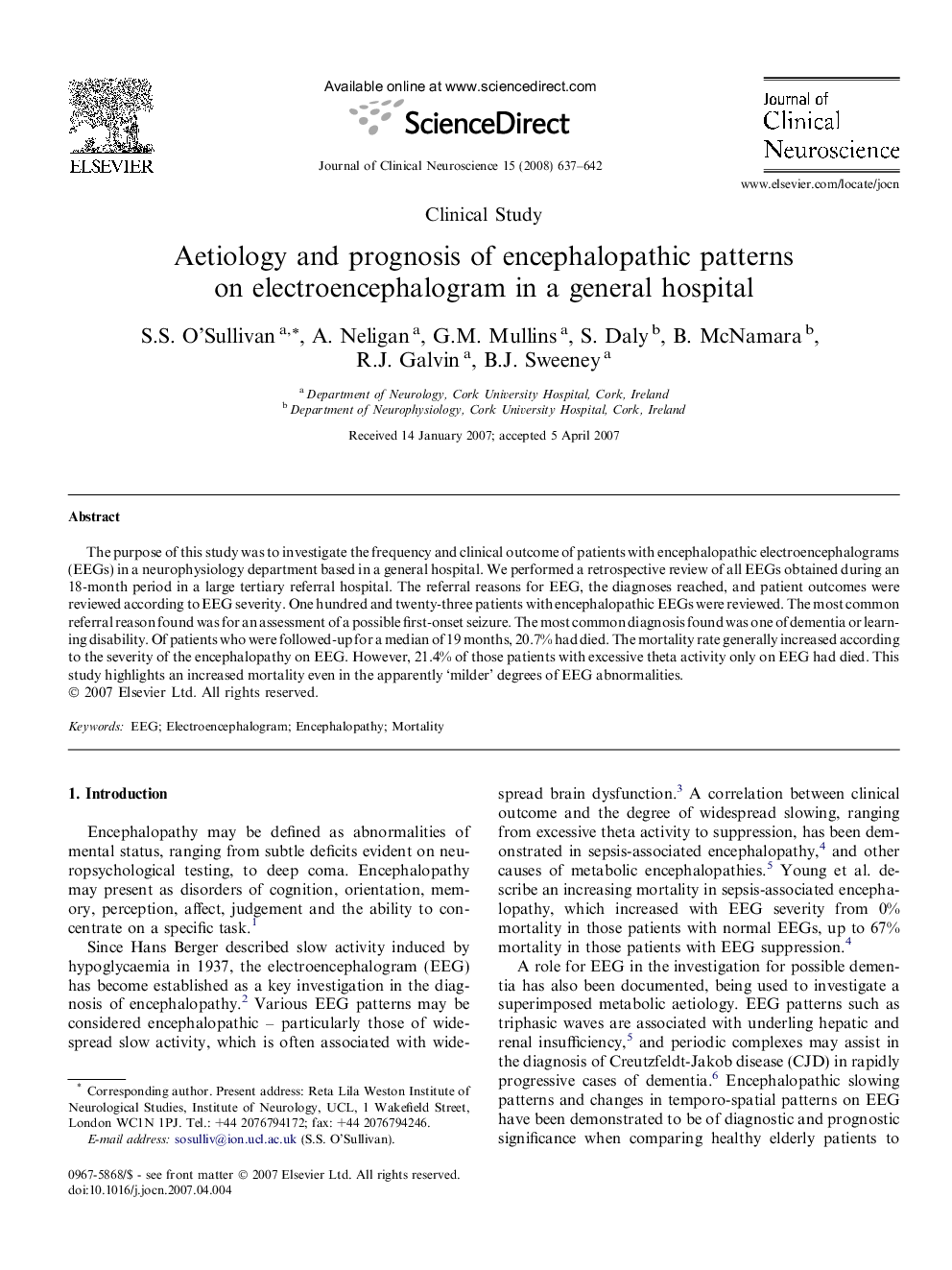| Article ID | Journal | Published Year | Pages | File Type |
|---|---|---|---|---|
| 3063171 | Journal of Clinical Neuroscience | 2008 | 6 Pages |
The purpose of this study was to investigate the frequency and clinical outcome of patients with encephalopathic electroencephalograms (EEGs) in a neurophysiology department based in a general hospital. We performed a retrospective review of all EEGs obtained during an 18-month period in a large tertiary referral hospital. The referral reasons for EEG, the diagnoses reached, and patient outcomes were reviewed according to EEG severity. One hundred and twenty-three patients with encephalopathic EEGs were reviewed. The most common referral reason found was for an assessment of a possible first-onset seizure. The most common diagnosis found was one of dementia or learning disability. Of patients who were followed-up for a median of 19 months, 20.7% had died. The mortality rate generally increased according to the severity of the encephalopathy on EEG. However, 21.4% of those patients with excessive theta activity only on EEG had died. This study highlights an increased mortality even in the apparently ‘milder’ degrees of EEG abnormalities.
